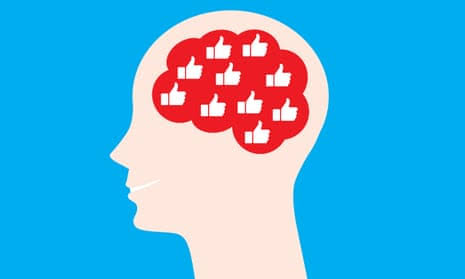
Why can’t people stop scrolling? The psychology behind social media addiction is the secret sauce. It’s not just about dopamine hits — it’s about using psychological triggers to drive engagement, build brand loyalty, and boost conversions. If you want to grow your business, understanding how social media addiction works is essential. Learn how to ethically leverage these insights and turn mindless scrolling into meaningful brand interactions.
Table of Contents
- Why Are We Addicted to Social Media: The Psychology Behind Social Media Addiction
- The Psychology Behind Social Media Addiction: What Fuels the Scroll?
- Dopamine and Social Media: The Reward System at Play
- FOMO: The Fear of Missing Out and Its Influence on Engagement
- How to Use the Psychology Behind Social Media Addiction to Grow Your Business
- Crafting Addictive but Ethical Content for Your Brand
- Conclusion: Leveraging the Psychology behind Social Media Addiction for Business Growth
Why Are We Addicted to Social Media: The Psychology Behind Social Media Addiction
Have you ever caught yourself scrolling endlessly through Instagram or TikTok, losing track of time? That’s not an accident — it’s social media addiction. Platforms are carefully designed using psychological triggers that keep users hooked.
For businesses, understanding the psychology behind social media addiction is a game-changer. It’s not just about creating viral content — it’s about leveraging these addictive elements to boost engagement, build brand loyalty, and drive sales. Let’s dive into the science behind social media addiction and how you can use it to grow your business.
The Psychology Behind Social Media Addiction: What Fuels the Scroll?

At its core, the psychology behind social media addiction revolves around the brain’s reward system. Every notification — whether it’s a like, comment, or follow — triggers a dopamine release, making users feel good and encouraging them to keep scrolling.
But dopamine isn’t the only player here. Social media addiction also taps into other psychological triggers like:
- Instant gratification: Quick feedback loops keep users engaged.
- Social validation: Likes and comments make users feel accepted.
- Variable rewards: Unpredictable content keeps people curious and coming back for more.
Businesses that understand these triggers can design content that not only grabs attention but also keeps their audience engaged and loyal.
Dopamine and Social Media: The Reward System at Play

Dopamine is the brain’s “feel-good” chemical — and it’s central to the psychology behind social media addiction. Each time users get a new notification, their brain rewards them with a dopamine hit, reinforcing the behavior. This creates a loop:
- Trigger: A notification appears — a new comment, like, or follow.
- Action: The user checks their social media feed.
- Reward: Dopamine surges as they see engagement.
- Repetition: The brain craves the next “reward,” fueling the addiction.
For businesses, the key is to design content that triggers these dopamine loops. Use interactive content like polls, Q&A sessions, and giveaways to keep your audience hooked. The more dopamine hits you provide, the stronger the bond between your brand and your followers.
FOMO: The Fear of Missing Out and Its Influence on Engagement
Another key factor in the psychology behind social media addiction is FOMO — the fear of missing out. Social media shows people highlight reels of others’ lives, making them anxious about not keeping up. This psychological trigger drives users to constantly check their feeds, ensuring they don’t “miss” anything important.
Smart businesses use FOMO to boost engagement by:
- Creating urgency: “Only 3 spots left — book now!”
- Highlighting exclusivity: “Be part of our VIP club — limited access only.”
- Leveraging social proof: “Join 10,000+ happy customers using our product.”
By tapping into FOMO, you push your audience to act fast, whether it’s making a purchase, signing up for a webinar, or engaging with your latest post.
How to Use the Psychology Behind Social Media Addiction to Grow Your Business
Now that we understand the psychology behind social media addiction, let’s explore how to leverage these insights for your business:
- Trigger dopamine with interactive content: Use quizzes, polls, and “comment to win” contests. These small actions provide instant gratification and keep users hooked.
- Build anticipation and excitement: Share sneak peeks and countdowns. The more your audience anticipates a reward, the stronger their dopamine response when they receive it.
- Leverage FOMO strategically: Promote flash sales, limited-time offers, and early-bird discounts. Show real-time social proof — like customer testimonials — to push users to take action.
- Encourage micro-commitments: Start with small requests (like a post or share) before asking for bigger actions (purchasing a product or joining a newsletter). This mirrors the reward cycle and builds trust over time.
By integrating these psychological triggers into your strategy, your content becomes more engaging, helping your brand grow its social media presence organically.
Crafting Addictive but Ethical Content for Your Brand
While using the psychology behind social media addiction is powerful, it must be done ethically. Here’s how to strike the right balance:
- Value-driven content: Ensure every post adds genuine value — educate, inspire, or entertain.
- Transparency is key: Don’t use manipulative tactics. Be honest about offers, giveaways, and deals.
- Positive reinforcement: Reward followers with recognition (shoutouts, exclusive offers) without exploiting their insecurities.
The goal is to build an engaged, loyal community — not to manipulate your audience. Ethical marketing ensures long-term brand success, while still using the psychological triggers that drive engagement.
Leveraging the Psychology Behind Social Media Addiction for Business Growth
The psychology behind social media addiction isn’t just a buzzword — it’s a powerful tool for business growth. By understanding dopamine loops, FOMO strategies, and reward-based interactions, you can craft content that turns casual scrollers into loyal customers.
Are you ready to elevate your brand’s social media presence? Let’s create a data-driven strategy that leverages the science of social media addiction — the right way.
Want to build a brand that people can’t stop engaging with? Reach out today for a personalized social media strategy that converts!





